Gayton Millenium Spinney
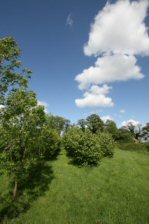
In 1999 a local needs survey pinpointed a request by the villagers for more trees to be planted in and around the village. Unfortunately, tree avenues, trees in hedgerows and random planting proved impractical. However on hearing of our difficulties, a local land owner promptly bequeathed the Parish Council half an acre of land in the corner of what had been the cricket field.
South Northants District Council paid towards the cost of a four rail fence including two access gates, which was erected along the diagonal boundary of the plot. Subsequently a successful application was made to the Trees For Northamptonshire Grant scheme. They supplied indigenous tree varieties. 75 ash, 75 oak, 20 field maple and 30 hazel for the spinney, plus 200 hawthorn and 10 guelder rose for the hedge which were planted inside the fence. They also provided canes and plastic tree guards.
On Sunday morning, December 4th, 1999, about 50 volunteers gathered in the field to plant the new trees and create our Millennium Spinney.
The Spinney was originally maintained by Colin, Duncan and Clive Wakelin but in 2007 another access gate was provided to allow the grass contractor to carry out the work. This gate will also be the public entrance.
For a guide to identify the trees planted, see the Gayton Spinney Tree Guide.
For a more detailed History of Gayton Millennium Spinney, see The History of the Millennium Spinney.


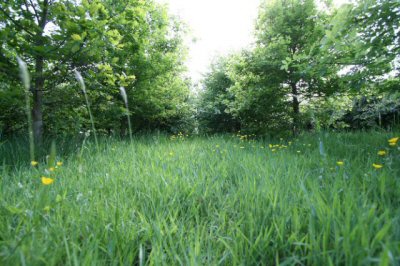
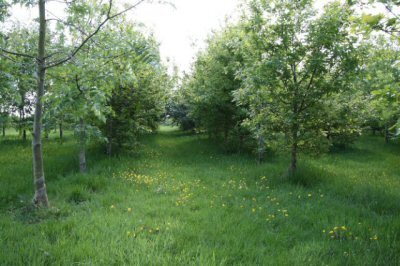
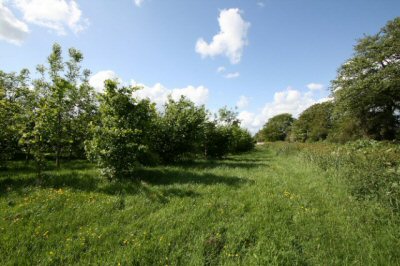
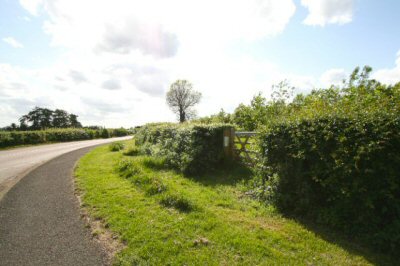
Gayton Spinney Tree Guide
Oak

Latin Quercus robor, Height 30m+
Penunculate Oak is a deciduous tree, with a broad, rounded outline up to 30 m or more tall, with a bark which becomes deeply fissured with age. It is one of the commonest native woodland trees and grows on neutral or lime-rich heavy clays and loams. Green male and female flowers are in separate clusters on the same tree (monoecious) and appear with the young leaves in May. Male flowers are in whorls of stamens in drooping catkins 2-4 cm long. The female flowers are scattered on 1-5 flowered stalks. Greenish striped, fawn acorns, ripe in October, are on long stalks, 2-8 cm long. The Latin name ‘robur’ means sturdy, which describes the tree and its timber which are so strong and durable. Acorns were once used for feeding pigs. The right to graze them in woodland was called ‘pannage’
Field Maple

Latin Acer campestre, Height 25m
Field Maple is a small, deciduous tree which can be up to 25 m tall, but often reaches only 10-15 m in height or remains as a shrub when coppiced. The leaves are 4-7 cm long, with 3-5 lobes. They are hairless above but downy below, at least on the veins, and are on stalks 10-20 mm long. The leaf surface may have ‘blisters’ caused by a gall-forming mite. The 5-petalled flowers are small and green. They are produced in upright clusters of 10-20 after the leaves have developed. There are male and female flowers on the same tree. The males have 8 showy stamens, the females a forked style. The fruits are 2-4 cm across and consist of a pair of ‘propellers’ each with a seed enclosed in a hairy swelling at the base. The leaves produce a honeydew on which hairstreak butterflies feed and are the food for the caterpillars of maple prominent moths. Maple wood is used for violin making, forming the back, sides and neck of an instrument
Hazel

Latin Corylus avellana, Height 6m
Hazel is a deciduous shrub up to 6 m high with several stems, often coppiced with a coppery-brown, scaly, peeling bark. The alternate leaves are almost round but broadest near the tip which is often drawn out into a narrow point. They are 5-12 cm long, markedly double-toothed on the margins, softly hairy on both sides and with fewer than 8 pairs of veins. The leaf stalks are short, 8-15 mm. The male and female flowers grow on the same plant and open from January to April before the leaves. The male flowers are in long, drooping catkins 2-8 cm long in groups of 1-4: the females are small upright ‘buds’ c. 5 mm long with red styles. Hazel nuts or cobs, up to 20 mm long, develop in clusters of 1-4, each surrounded by an enlarged, leafy, divided calyx longer than itself. The nuts are important food for squirrels, mice, pigeons, pheasants and jays. Where stems are coppiced on a regular 7-14 year rotation they produce a valuable supply of rods for thatching, hurdles, bean poles and pea sticks.
Ash

Latin Fraxinus excelsior, Height 40m
Ash is a deciduous tree with a single trunk up to 40 m in height, with a greenish-grey bark, deeply fissured with age. The leaves are made up of 9-13 hairless leaflets including a single one at the end. Each leaflet is 5-11 cm long, narrowed at the tip, with a toothed margin. The buds, in opposite pairs at the base of each leaf, are black. Bunches of petalless male and female flowers grow on separate twigs on the same tree (monoecious)showing purple before the leaves appear in June. The pale brown fruits or ‘keys’, which blow away in the wind, consist of a single seed surrounded by a wing. Ash wood is white and tough and can be usd for oars, axe-handles, hockey-sticks, skis and many other ‘implements’.
Hawthorn

Latin Crataegus monogyna, Height 10m
Hawthorn is a thorny, much-branched shrub or small tree, up to 10 m in height. The stem is grey (unlike Blackthorn), but the youngest twigs can be red. The 5-petalled white flowers are arranged in clusters of up to 16 in each, on branched stalks up to 3 cm long. The deep red fruits are 8-10 mm across with a single stone inside. The fruits called ‘haws’ provide winter food for many birds, including thrushes, fieldfares and redwings. It is one of the most important shrubs for wildlife, generally providing food for 150 different insects, including Duke of Burgundy butterflies.
Guelder Rose

Latin Viburnum opulus, Height 4m
Guelder Rose is a spreading, much-branched deciduous shrub, up to 4 m high, with greyish, hairless stems. The 5-petalled, fragrant flowers are arranged in dense clusters with large sterile white flowers on the outside and small, creamy-yellow fertile ones on the inside. They open in June and July. The central flowers develop into clusters of drooping, juicy red berries in autumn, each with a single seed. The leaves turn a vivid red or yellow in October and fall in early November. ‘Guelder’ came from an unusual form of this decorative shrub which arose in the Dutch province of Guelderland. The leaves, bark and berries are all POISONOUS to man.
